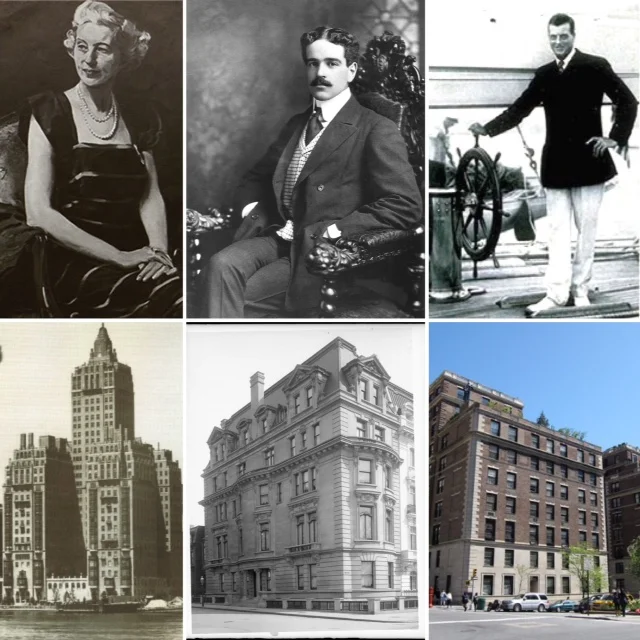Downsizing, Vanderbilt Style. Part Two: A Couple of In-laws
In the last installment of this series, I looked at how the four daughters of William Henry Vanderbilt reacted to the changing world around them. Now we will turn our attention to some of the women who married into the family (please note I am not giving the Vanderbilt males short shrift, but they tended to stay put in their homes, or expire before their wives).
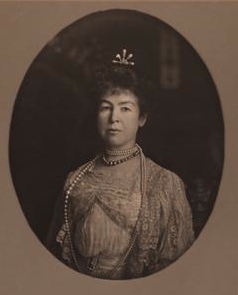
The beginning of the 20th Century found Alice Gwynne Vanderbilt, widow of Cornelius Vanderbilt II, regally living in the most famous of the family’s New York City residences, 1 West 57th St. Completed in 1882 and dramatically enlarged in 1895, it occupied the entire block front between 57th and 58th streets, making it the largest private residence in Manhattan.

When Cornelius died in 1899, he left it to Alice along with their Newport cottage the Breakers (another of Americas grandest homes),
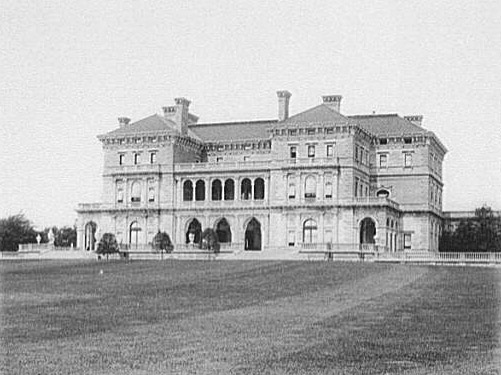
The Breakers, Newportalong with $1million in cash and the income from a $7million trust which was considered more than enough to maintain her in splendor for the rest of her days. What Cornelius and Alice hadn’t anticipated was the toll the 16th Amendment (more popularly known as income tax),which passed in 1913 and skyrocketing property taxes would eventually take on her fortune. By the mid-1920’s she was paying $80,000 a year on the Breakers and $130,000 a year on 1 West 57th street, essentially consuming the bulk of her annual income. Circumstances became strained to the point where she only opened the Breakers every other summer (though being a Vanderbilt, Alice’s version of economizing was to lease an Hotel Particulier on la Rue de Varenne in Paris instead). Under other circumstances, Alice might have looked for one of her children to take over 1 West 57th St. and its maintenance. Unfortunately, her son Alfred Gwynne who inherited the largest share of her late husband’s fortune had died in 1915 on the Lusitania. Neither of her other two surviving sons, spendthrifts Cornelius and Reggie (father of Gloria) had the resources. In fact, Alice had already begun discretely helping them out from her own coffers. Her younger daughter Gladys had married a Hungarian aristocrat, Count Laszlo Szechenzi. While Hungary’s nobility produced exotic sounding titles, after World War I few had significant fortunes to go along with them (the occasional Esterhazy aside). Her elder daughter Gertrude, married to Harry Payne Whitney, and the only one of her offspring who possessed a fortune large enough to keep the residence, was already ensconced in the mammoth Whitney mansion ten blocks north at 871 Fifth Avenue.
871 Fifth Avenue
Alice had no choice. In 1925, she sold her home to developers. The palace was soon demolished, replaced by the building which still stands today housing the retailer Bergdorf Goodman.

There is a silver lining to be found in this story however. The $7 million Alice received from the sale of 1 West 57th Street essentially doubled her fortune. Soon after, she purchased the former George Gould mansion at Fifth Avenue and 66th street for $800,000. Alice's Final Home at Fifth Avenue and 66th Street.
Alice's final home
This was not only near her daughter Gertrude’s home, but also the mansions of her sister in laws Florence Twombly and Emily Sloane White, whom she visited regularly. Here Alice lived in magnificent, if not quite imperial, splendor until her death 1935.
In 1927, Alice’s nephew William K Vanderbilt Junior and his wife, the former Virginia Graham Fair were getting divorced,
Mr and Mrs William K Vanderbilt, jr in happier times

with Mrs. Vanderbilt keeping their New York City home at 666 Fifth Avenue. Designed for the then newlyweds by Stanford White in 1906, the French Renaissance chateau was the perfect compliment to William K Senior’s famous Hunt-designed masterpiece next door at 660 Fifth Avenue. The problem was, by the 1920’s Hunt’s masterpiece next door was gone. Surrounded by commercial establishments Mrs. Graham Fair Vanderbilt (as she was now known) wasted little time in selling the mansion,
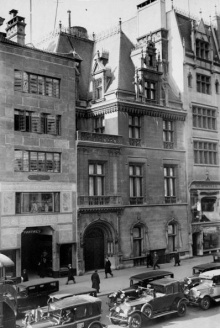
which was demolished soon thereafter. The daughter of James Graham Fair and an heiress in her own right, she commissioned the architect John Russell Pope to design a new home for her farther uptown. Leapfrogging over the fashionable 60’s and 70’s, she chose to have her new residence constructed on East 93rd St. Built on a wide lot, the commodious mansion was designed in a French style, but in the restrained elegance of a later period, blending harmoniously with the gracious Loew and Baker mansions going up nearby.
Mrs Graham Fair Vanderbilt residence on 93rd st.
Virginia Fair Vanderbilt did not enjoy her newly constructed mansion for long, dying in 1935. Her residence however, recently restored, survives to this day.
That left one residential holdout in what was once known as “Vanderbilt Row”.
640 Fifth Avenue
640 Fifth Avenue, home to Cornelius Vanderbilt III, and his wife, the former Grace Wilson.
Cornelius and Grace walking on Fifth Avenue
They came into this urban palace by chance; the previous owner, when their uncle George Washington Vanderbilt died in 1914 with no male issue. Per the dictates of his father William Henry Vanderbilt’s will, the house then passed to Cornelius and Alice’s eldest son. Although the neighborhood had already become commercial, the younger Vanderbilts did not hesitate to spend $500,000 for architect Horace Trumbauer to gut renovate the house in 1917, providing a stage for Grace’s ambitious quest to become New York’s “Queen of Society”. It was here Grace regally entertained the crème de la crème of the international smart set, literally rolling out a red carpet across the sidewalk for her guests’ arrival, in full view of the gaping public. Her quest was so successful that the press bestowed on her the title of “The Mrs. Vanderbilt”, despite the fact that she and Cornelius possessed one of the family’s lesser fortunes, while New York’s more aristocratic elements snidely referred to her as “the Kingfisher” due to her relentless pursuit of royal and titled guests.
Grace Holding Court in Her Library
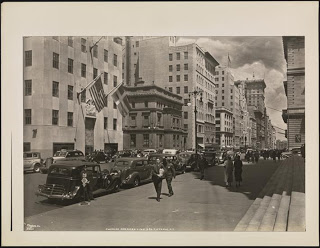
Though the crowds of tourists, shoppers and gawkers around her mansion grew exponentially over the decades, it is quite likely that Grace would have remained there for the rest of her life if she had the option (at the end of the day, she loved having an audience). Unfortunately, she didn’t. Thanks to the couple’s lavish lifestyle, they managed to burn through the $7 million Cornelius had received from his father’s estate ($1 million left to him by Cornelius Sr, who more or less disinherited him for marrying Grace, and another $6 million given to him by his brother Alfred to avoid an ensuing lawsuit and public scandal). Though their bank accounts were replenished by the several million left to Grace by her father Robert Wilson and to Cornelius by his mother Alice, by the end of the 1930’s there was very little left. When Cornelius died in 1942 aboard a rented yacht in Miami(he and Grace had been living separate lives for some time), his sister Gertrude had to pay to have his body shipped back to New York. Prior to that, 640 Fifth Avenue had already been sold for $1.5 million in 1940 ($7.5 million less than he had been offered before the Depression twelve years earlier). The terms of sale allowed the Vanderbilts to remain as tenants for one year. However due to the War, Grace did not have to actually vacate until 1944, giving her the chance to throw several final parties for thousands of guests.
One of the final parties at 640 Fifth
facing the inevitable, she reluctantly began to look for a new home. Grace being Grace, apartment living was not an option for her next move, so instead she purchased 1048 Fifth Avenue, making due with a mere 28 rooms.
1048 fifth Avenue
She moved in, jokingly calling it her Gardener's Cottage, bringing her butler and her bathroom from 640 Fifth along with her. Her final home survives today as the Neue Galerie.














